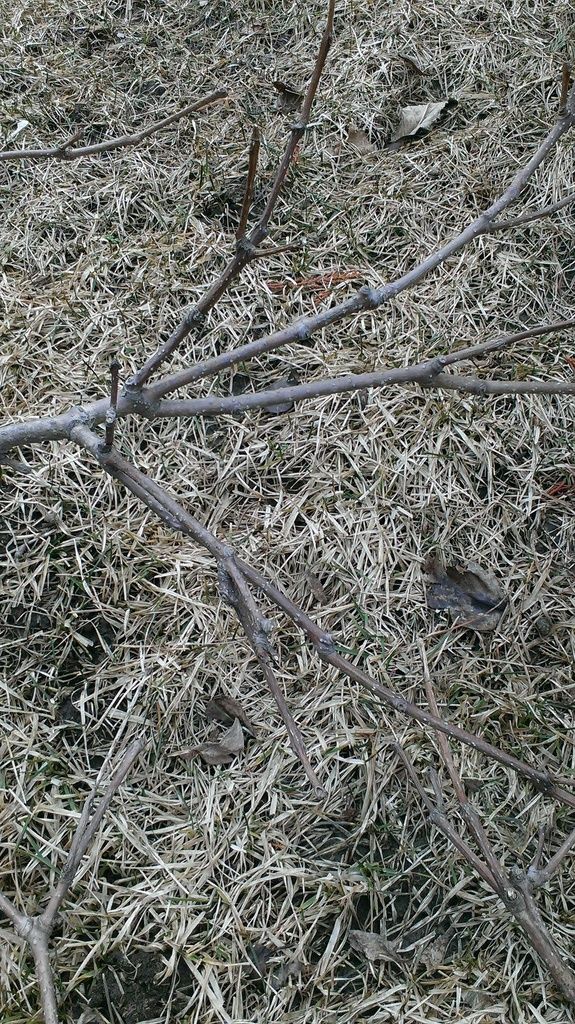-
March 27th, 2015, 03:26 PM
#31
Has too much time on their hands
-
March 27th, 2015 03:26 PM
# ADS
-
March 27th, 2015, 03:42 PM
#32

Did the yellow color soon turn more cinnamon/brown and smell like a cow barn?
I still stick with Locust but it could be Kentucky Yellowwood however the bark looks way to rough to be Kentucky Yellowwood.
They are very similar, visually, in leaf, flower and bean production.
-
March 27th, 2015, 03:45 PM
#33
Has too much time on their hands


Originally Posted by
skypilot

Did the yellow color soon turn more cinnamon/brown and smell like a cow barn?
I still stick with Locust but it could be Kentucky Yellowwood however the bark looks way to rough to be Kentucky Yellowwood.
They are very similar, visually, in leaf, flower and bean production.
Not sure... didn't check. I can go back out there to see if they changed to brown
-
March 27th, 2015, 04:31 PM
#34


Originally Posted by
Splaker

Not sure... didn't check. I can go back out there to see if they changed to brown
No big deal. The wood will be a yellow and "decay", just like a sliced apple, to a gradual browning.
Yellowwood is mostly a "suthern" tree but does well in the Northern States like Indiana, so should be doable here in ON.
-
March 27th, 2015, 05:23 PM
#35

This got a little interesting now. The vibrant yellow colour points to the Amur Cork Tree. Look it up and see what you think.
How is it one careless cigarette can cause a forest fire, but it takes a whole box of matches to light a campfire?
-
March 27th, 2015, 05:45 PM
#36

Osage orange tree has exactly that inner bark color . I hope it isn't an osage as you'll be picking up inedible fruit every year.
Those looking for Osage Orange trees in Ontario should not look much beyond Lambton County. They may be found as far east as Toronto but regions north of Goderich and east of Toronto are off limits for Osage Orange because temperatures are too cold.
https://www.google.ca/search?sourcei....0.Us9iIrNCz_U
" We are more than our gender, skin color, class, sexuality or age; we are unlimited potential, and can not be defined by one label." quote A. Bartlett
-
March 27th, 2015, 06:34 PM
#37
Has too much time on their hands


Originally Posted by
oaknut

This got a little interesting now. The vibrant yellow colour points to the Amur Cork Tree. Look it up and see what you think.
Hmm... Amur cork tree, eh? It was kind of "spongy" when I picked at the bark...
Looked it up - it can grow in Ontario..
-
March 27th, 2015, 06:41 PM
#38


Originally Posted by
Splaker

Hmm... Amur cork tree, eh? It was kind of "spongy" when I picked at the bark...
Looked it up - it can grow in Ontario..
Yes they can thrive and actually spread even in our climate providing there are both male and female specimens. The Amur Cork Tree is considered an invasive weed throughout many US states.
How is it one careless cigarette can cause a forest fire, but it takes a whole box of matches to light a campfire?
-
March 27th, 2015, 08:02 PM
#39
Has too much time on their hands


Originally Posted by
oaknut

Yes they can thrive and actually spread even in our climate providing there are both male and female specimens. The Amur Cork Tree is considered an invasive weed throughout many US states.
So I guess I should chop it down and use it for the bonfire...
-
March 27th, 2015, 08:03 PM
#40
Has too much time on their hands


Originally Posted by
Sharon

Osage orange tree has exactly that inner bark color . I hope it isn't an osage as you'll be picking up inedible fruit every year.
Those looking for Osage Orange trees in Ontario should not look much beyond Lambton County. They may be found as far east as Toronto but regions north of Goderich and east of Toronto are off limits for Osage Orange because temperatures are too cold.
https://www.google.ca/search?sourcei....0.Us9iIrNCz_U
Doubt it then... I'm in zone 4.... few miles from Simcoe County... glacier still hasn't retreated here...

